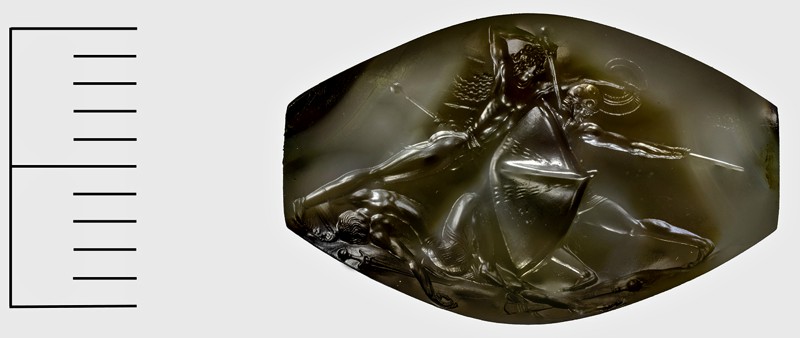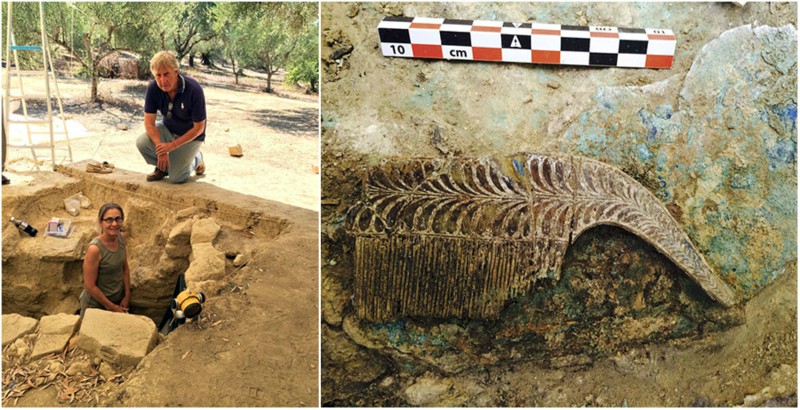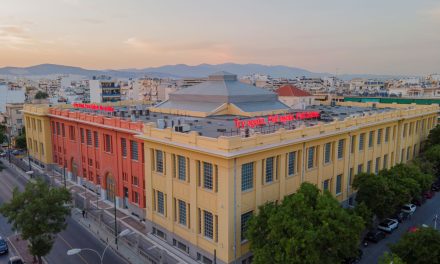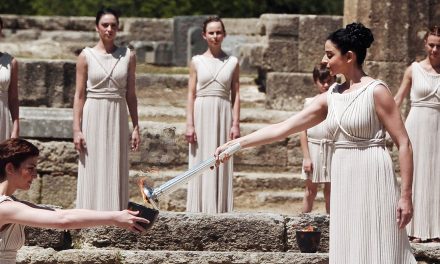According to Archeology magazine, published by the Archaeological Institute of America, the discovery of a man’s grave filled with more than 2,000 artefacts outside the Palace of Nestor in Pylos, on the southwestern coast of Greece, has changed the way archaeologists view two great ancient Greek cultures. In the past, scholars debated long on the nature of the relationship between Mycenaean and Minoan civilisation, which centred on whether Mycenaean culture -and what is thought of as ancient Greek culture, dating to half a millennium later- was imported from Crete or was a homegrown phenomenon. But the exceptional discovery in Pylos of an intact tomb of the Mycenean warrior, later dubbed the “Griffin Warrior”, filled with over 2,000 artefacts suggests that the concept of competing cultures might obscure a deep interconnectedness.
“Archaeologists have a way of cutting the world up into well-bounded cultural entities, but it seems that in the Late Bronze Age new identities were being formed,” archaeologist Dimitri Nakassis of the University of Colorado Boulder stated, adding that “there used to be clear lines between the Minoans and the Mycenaeans, but a lot of work now points out that these are our categories, not theirs.”
Excavations at Pylos and at sites all over mainland Greece have provided a great deal of evidence of the Mycenaeans in their prime. This research has revealed that at their peak they were tied into a world that encompassed most of the eastern Mediterranean, including ancient Egypt, the city-states of the Near East, and the islands of the Mediterranean. One such link, though, stands out as perhaps the most important: a deep connection to the island of Crete, which, in the Late Bronze Age, was inhabited by members of a civilisation that scholars call Minoan after the legendary King Minos, a civilisation very different from that found on the mainland.
 The Pylos Combat Agate, believed to be a Cretan work of Late Minoan I, may be the finest example of glyptic art yet discovered in a Minoan or Mycenaean context. It was found in 2015 in the grave of the so-called Griffin Warrior at Pylos. (ANA-MPA, courtesy of the University of Cincinnati)
The Pylos Combat Agate, believed to be a Cretan work of Late Minoan I, may be the finest example of glyptic art yet discovered in a Minoan or Mycenaean context. It was found in 2015 in the grave of the so-called Griffin Warrior at Pylos. (ANA-MPA, courtesy of the University of Cincinnati)
The tomb of the wealthy warrior who had been buried with artefacts, including jewels and beads made from precious stones, ivory objects, weapons, armour, and vessels made from precious metals was discovered in 2015 by a team of archaeologists led by researchers from the University of Cincinnati. Sharon Stocker was co-leading the team that unearthed the undisturbed shaft tomb, along with Jack Davis, in cooperation with the Ephorate of Antiquities of Messinia.
The tomb dates to 1500 B.C. and was originally thought to be the corner of a house located in the area of the Palace of Nestor, but the excavators soon realised that they had found an undisturbed grave shaft. The find is so extraordinary that Sharon Stocker stated: “This previously unopened shaft grave of a wealthy Mycenaean warrior, dating back 3,500 years, is one of the most magnificent displays of prehistoric wealth discovered in mainland Greece in the past 65 years.”
Read Greek News Agenda’s interview with archaeologists Jack Davis and Sharon Stocker on their discovery in Pylos
Read also via Greek News Agenda: GNA Feature: 2015 – A Great Year for Archaeology in Greece; Yannos Kourayos, bringing the archaeological site of Despotiko to life; Four shipwrecks to become underwater museums
Also visit the Griffin Warrior Tomb official website
M.V.
TAGS: ARCHEOLOGY | HERITAGE | HISTORY






![Literary Magazine of the Month: [FRMK] and its Ten-Year Anniversary Issue ‘Tenderness-Care-Solidarity’](https://www.greeknewsagenda.gr/wp-content/uploads/sites/2/2024/04/frmkINTRO2-1-150x150.jpg)





